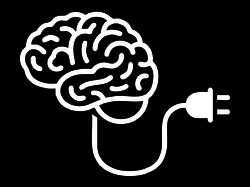Products “for the person who has everything” have always been inessential by their nature. But in this era of “smart” tech that somehow isn’t smart enough to know when it’s not smart enough, the bad fit of technical capability to human need or context can be outright damaging.
Amazon’s Halo health band may be the latest example of this particular excess. “The Fitness Gadget We Don’t Deserve or Need” is as good a description of overreaching technology as any. Halo has come in for several similarly dreary descriptions this month: “Amazon’s new health band is the most invasive tech we’ve ever tested,” for example, or “Amazon Halo fitness tracker sounds awesome, but also like a Black Mirror episode.”
I confess: when I saw these headlines, I was tempted to dash to the Twitter machine and snark something like, “‘the gadget we don’t deserve or need’ describes every fitness gadget out there.” Zing. But then I considered the fitness devices and services I truly appreciate in my own life. They’re the ones that don’t try to go beyond what the tech is good at, that don’t demand I overshare, that provide genuine value and then get out of my way.
So what does the technology we deserve look like? Here’s a brief roundup of my personal fitness devices, why they work for me, and some principles that can be derived for good product design.
Focused and purpose-built
I’m a runner, and I love my trusty Garmin Forerunner 235 watch. It has reliable GPS for tracking distance, good-enough heart rate, and easy syncing to Strava where I track progress and share accomplishments and struggles with friends who care about such things. (Aside: Strava is probably my favorite social network these days, always positive and inspiring.)
In particular, I love this watch for its limited features—just the metrics a runner would care about. It’s tuned for the sport. The data it displays is reliable; it’s generated by sensors that are good at delivering that specific data, without interpretation or magical algorithms. Similarly, Garmin watches have old-school buttons, no touchscreen nonsense that stops working with sweaty fingers. Throughout, the watch uses the right tech for the right job.
It also collects the right data for the job, and it’s clear and obvious to me why that data is being collected and how it’s being used. Location and heart-rate data is intimate info for sure, but the value that it returns is proportional. It’s a fair deal. Compare that to Amazon’s Halo, which asks you to upload naked pictures of yourself (!!) to estimate body fat, and which listens to your voice all day to monitor your emotional state. It asks a whole lot to give you only a little; the data deal is not reciprocal.
As much as I love this watch, I confess I’m tempted to upgrade to Garmin’s newer Forerunner 245 or Forerunner 945. Both have longer battery life and more accurate heart rate and GPS tracking. And the 945 has maps, which would be a boon for my trail running since I always manage to take wrong turns. But they come with feature bloat, especially the very pricey Forerunner 945—lots of metrics I don’t need, derived from wrist sensors that don’t seem up to the task.
I’m also skeptical about some of the smart features of the 945 like its virtual training coach which delivers a workout plan adapted from my stats. This personalization feels appealing and these things certainly can work, but as both designer and consumer, I’ve found it more effective to provide information that helps inform decisions, rather than offering a flat assertion of what that decision should be. Machine learning and AI algorithms are often better at surfacing info that amplifies human agency or judgment, rather than replaces them.
Reliable and “dumb” mechanical gadgets
The Theragun Mini has been a game-changer for me for improving recovery from long runs and soothing sore muscles. It’s not “smart,” just effective. I’m interested for the same reason in the Orb Activate massage ball. These are cleverly made physical tools that are effective at what they do yet content to let me decide how they’re used.
Crowdsourced and people powered
Strava isn’t just my favorite social network, it’s also great at suggesting tons of new running routes, based on where people around me frequently run. It doesn’t tell me where to run; it encourages me to explore. The app surfaces the patterns and makes suggestions, letting me tweak and alter routes to fit my wants and needs.
AllTrails is more explicitly people-powered, a collection of hand-picked trails, each rated and reviewed by many hikers, bikers, and runners. On my phone, the app’s offline-available maps have proven essential to my trail running as I explore the trails around my new home in Asheville, NC. (I just wish I didn’t have to fish out my phone to consult the maps on my run; so again, I keep eyeing those maps on the Garmin Forerunner 945. For running, the phone form doesn’t quite follow function.)
Safety and communication
As I’ve run deeper into the mountains around Asheville, I’ve had my share of close encounters with bears and copperheads, as well as a bunch of face plants and first-aid scrapes. I’ve confronted some nervous-making glimpses of vulnerability while being well away from civilization—and cell service.
For peace of mind for myself and my family, I splashed out on tech to get help if I need it. The tiny Garmin InReach Mini is an expensive but remarkable satellite communicator. It can broadcast GPS location, send text messages, and call for emergency services. And it fits in the palm of my hand.
Product design principles
The features in Amazon’s Halo feel like interesting experiments, but dubious for a shipping product. The work of future-facing designers is certainly to lean into emerging possibilities, but the best products match present capabilities to genuine needs.
Take the lessons from my very personal list of favorite gadgets and services, and a handful of themes emerge for the era of smart personal devices:
- Give more than you take. The personal data your service demands should be proportional to the insights it delivers.
- Be transparent and obvious about how that data is used.
- Pare the features and information to those most meaningful to the user. Adding more rarely provides value.
- Identify the interaction method most appropriate to the task or context. Digital/virtual is not always better than mechanical/physical (e.g. touchscreens versus buttons).
- Provide info as fact only when there is high confidence that the sensors or algorithm are actually reliable at delivering it. Confidence in presentation should match confidence in the underlying tech. (When in doubt, show information as a signal or hint, not an absolute. Earn trust by being transparent when the system isn’t reliable.)
- Avoid magical thinking about what technology can accomplish. Tech is never as smart as we’d love to believe it is, but it can be good at focusing attention and judgment. How might gadgets and services amplify human agency instead of replace it?
Future-facing product design is what we do. Are you or your team wrestling with how to design for data, sensors, machine learning, or AI? Big Medium can help—with executive sessions, workshops, or full-blown engagements for product design and development. Get in touch.





